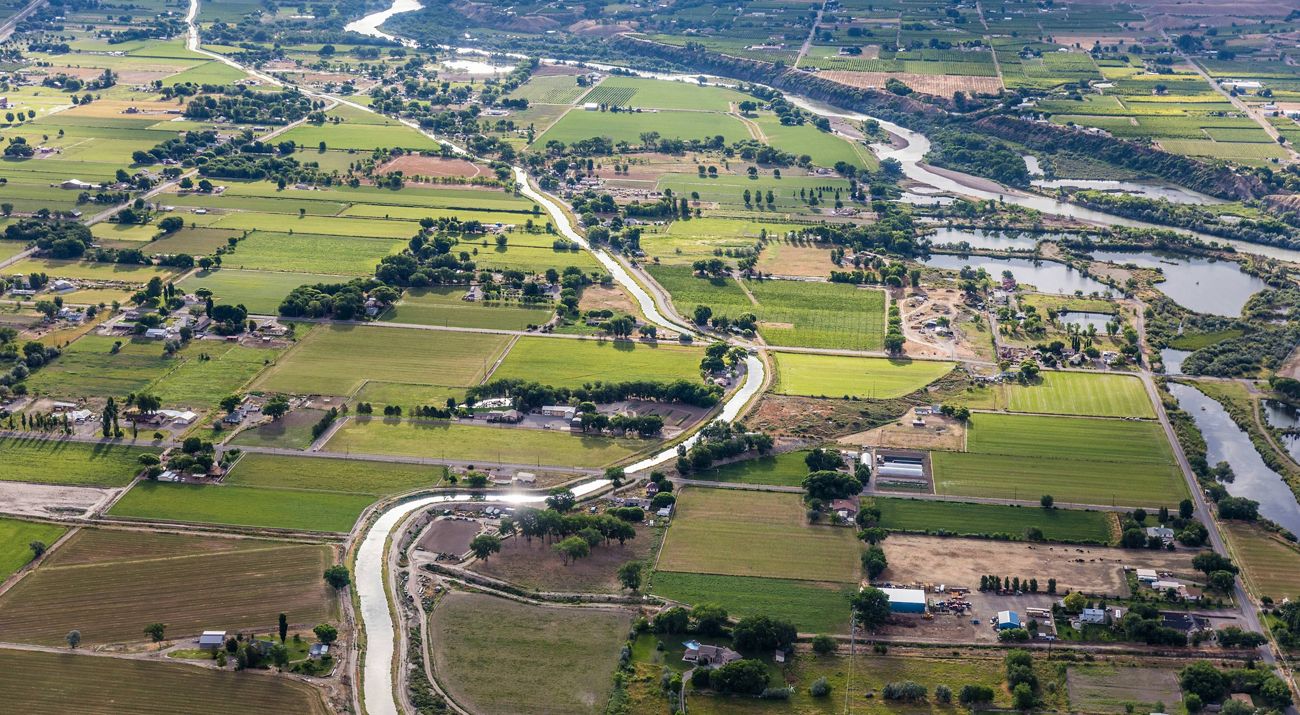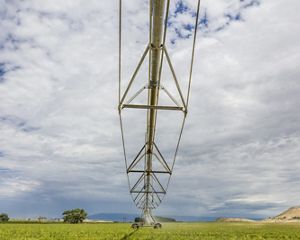Solutions to Address Water Scarcity in the U.S.
More than half the nation has regularly experienced droughts since 2000.
Freshwater is essential for all life on Earth. Yet, only 2.5 percent of Earth’s vast water resources are fresh, and less than 1 percent of that is easily accessible for people and nature. This limited resource must be managed wisely, particularly in the face of climate change, growing populations, and increasing demands from multiple sectors. To meet this challenge, The Nature Conservancy works to reduce demands for water among the biggest users, improve the flexibility of water governance and management, and advance financial incentives and tools that enable users—like irrigation districts and cities—to transfer water, which will provide water security for the environment as well.
The benefits of healthy, sustainable water resources:
- Supply clean drinking water.
- Grow our food and are used to raise livestock.
- Produce the goods we use.
- Drive economic and social benefits.
- Sustain healthy rivers, lakes, springs and associated habitats that support diverse wildlife.
- Provide for recreation and tourism. And can be harnessed to produce clean hydroelectric power.
Freshwater Challenges in the U.S.
-
>50%
More than half the continental U.S. has regularly experienced drought conditions over the past two decades.
-
20-25%
Because of climate change, experts predict precipitation will likely decline 20 to 25 percent by 2100 in much of the West.
-
40M
Since 2000, the Colorado River Basin— which supplies water to 40 million people—has experienced historic drought conditions.
-
40/50
Water scarcity isn’t limited to Western states. In 2014, 40 of 50 state water managers expected shortages in some portion of their states over the next 10 years.
Our Freshwater Conservation Strategies
Our approach to protecting freshwater involves a combination of water funds, promoting incentives, collaborating with water users, and advancing sound water policies and funding.
We demonstrate our work through more than 70 projects across the nation. Currently, approximately 90 percent of these are located in the western U.S., including TNC’s Colorado River Program. The remaining projects are located east of the Mississippi River in regions that are beginning to experience water scarcity more frequently and intensely.
Finding Solutions to Water Scarcity in Agriculture
Agriculture accounts for 70 percent of the planet’s freshwater withdrawals annually. This presents a tremendous opportunity to work with farmers and agriculture supply chain companies to ensure the sustainability of the food we eat and the water upon which it relies. In the U.S., irrigation accounts for more than 80 percent of total water consumptive use and up to 94 percent of consumption in regions most prone to water scarcity. Below are two case studies that demonstrate how TNC is working with farmers to help reduce water use.
Case Study 1: Saving Water, Securing the Nation's Food
Agricultural irrigation accounts for 90 percent of the consumptive water use in Nebraska. There are 7 million acres of irrigated land in the Platte River Valley alone. Here, The Nature Conservancy recognized a chance to conserve water at a large scale and reached out to landowners interested in new water-saving irrigation technologies. These efforts evolved into a collaboration with Coca-Cola, John Deere, McDonalds and the World Wildlife Fund to launch the Western Nebraska Irrigation Project in 2014.
TNC connected 11 farmers who collectively manage 8,000 acres with technology providers to install soil moisture probes, pivot telemetry and weather stations to help reduce water use. The farmers were then provided support that enabled them to micromanage irrigation and reduce the amount of water pumped from the underlying aquifer by 20 percent. The project site included quality historic water-use records, which enabled researchers to measure change. Over a three-year period, the farmers saved over a billion gallons of water—enough to fill more than 110,000 semi tanker trucks.
Less groundwater pumping not only helps secure the resiliency of the underlying aquifer, it also saves the farmers time and money. One participating farmer reported “the probes paid for themselves easily each year,” while another noted the technology saved time because he didn’t have to drive to his field to check conditions.
The project’s success spurred interest in Central Nebraska, where TNC teamed with Nestlé Purina and Cargill to launch a second irrigation project in 2018. Here, researchers estimated that 20 participating farmers saved at least 120 million gallons of water in the first year. In March 2020, the project reached its enrollment target of 50 farmers, with many reporting that the technology and training has helped them save time and money because of less pumping.
Case Study 2: Price River, Utah—Water Wise Solutions for People and Nature
TNC is working with a wide range of partners in the Price River watershed to enhance water use in ways that benefit agricultural operations while improving flows. Since 2016, TNC has worked with farmers to test water-saving methods that could inform drought contingency plans in the Colorado River’s Upper Basin. Working with farmers and other partners, TNC is exploring temporary, voluntary and compensated measures—like water banking—to help reduce the risk of water shortages for all.
Quote: Kevin Cotner
My family has farmed here for three generations. Working with TNC gives me a chance to help improve my agricultural operations and the wildlife habitat here that I care so much about.
Agriculture uses about 80 percent of the water in the Colorado River Basin, with large flows moving from rivers to fields through irrigation ditches, canals and other structures. The infrastructure that moves irrigation water is often old, leaky and inefficient. To address this challenge, TNC works with water users to improve the delivery and timing of irrigation water through updated canal lining and piping. On the Price River, TNC has negotiated an innovative water-management agreement with a canal company to enhance flows and agriculture. The agreement upgrades the company’s infrastructure and benefits six rare fish species in the lower Price. Water that isn’t delivered to shareholders is stored in an adjacent reservoir for strategic releases in late summer when levels in the river typically drop. While these measures increase water for the environment, they can also benefit farm productivity and help enhance the security of water for agriculture.
Take Action
You can advance TNC’s efforts to secure clean fresh water around the world. Make a difference today!






